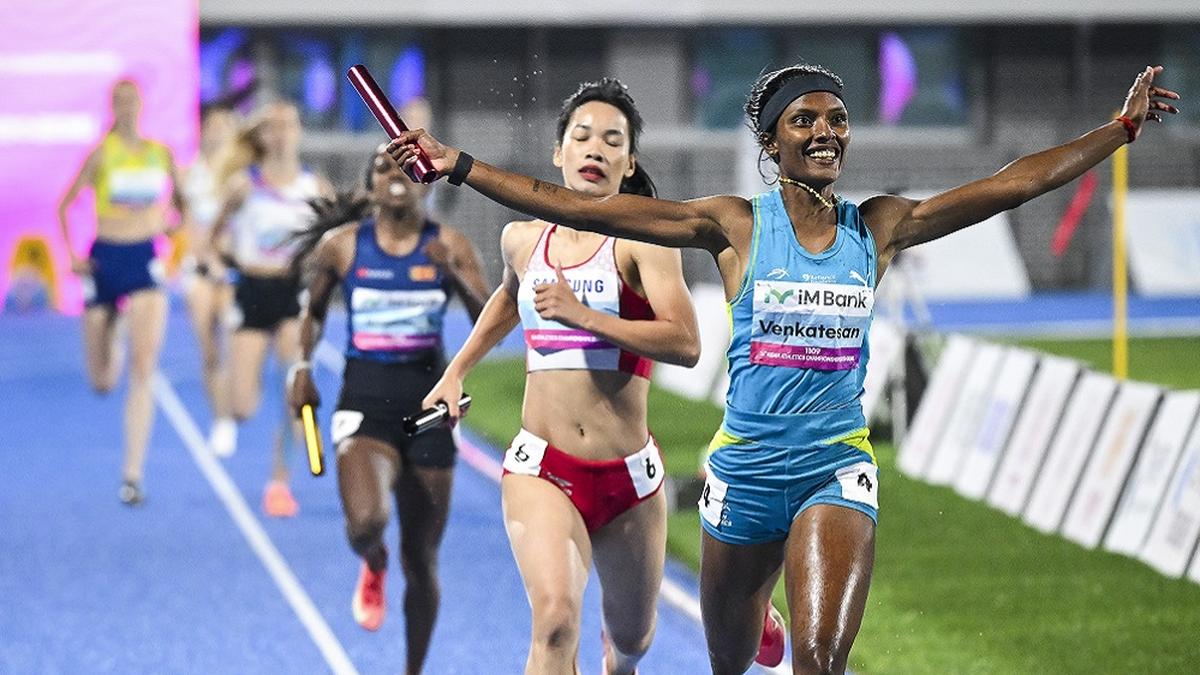Asian Championships 2025 Review: Future looks bright for Indian athletes after stellar show in Gumi
Javelin thrower Sachin Yadav may have won silver on his international debut, but for coach Naval Singh, the real highlight wasn’t the medal — it was the expression on gold medallist Arshad Nadeem’s face.
“Arshad came to Gumi saying he was targeting the 100m mark. Around 2,000 Pakistani nationals had come to cheer for him. Everyone thought he was going to win easily. But by the end, they were all worried — even Arshad. I was watching from the stands, and uske chehre se pata lag raha tha ki usko kuch samajh nahi aa raha tha (from his face you could tell he didn’t know what was going on),” he says.
As the reigning Olympic javelin champion, Arshad had swaggered into Gumi expecting to coast to the title, only to end up trailing Sachin for the first three throws of the competition. He eventually pulled ahead on his fourth attempt, eking out a fairly narrow win with a throw of 86.40m. Sachin threw 85.16m — a new personal best.
While the Indian’s performance may have fallen just short of pulling off a monumental upset, the fact that he showed no fear on the biggest stage of his career bodes well for the future.

Sachin Yadav gave Olympic gold medallist Arshad Nadeem quite a scare in the javelin throw event.
| Photo Credit:
Asian Athletics
Sachin Yadav gave Olympic gold medallist Arshad Nadeem quite a scare in the javelin throw event.
| Photo Credit:
Asian Athletics
Sachin admits as much: “Initially, my body was a little tight, but after a couple of throws, I was confident I could get the throw I wanted. It doesn’t matter who I’m competing with — the only thing I think about is doing my best.”
With 24 medals overall — eight gold, 10 silver, and six bronze — India returned with its best-ever haul at an Asian Athletics Championships held overseas. But beyond the numbers, it’s the composure and maturity shown by the country’s next generation of athletes that stands out as perhaps the most significant takeaway.
Sachin wasn’t the only first-time Asian Championship competitor to step up on the big stage. On the final day of the competition, 21-year-old Animesh Kujur shattered his own national record by 0.18 seconds, clocking 20.32 to win bronze in the men’s 200m — becoming only the second Indian in 52 years to medal in the event at the Asian Championships.
Later that evening, 23-year-old middle-distance runner Pooja ran the seventh-fastest time by an Indian woman in the 800m, clocking 2:01.89 to take bronze.
The previous day, however, would see another Pooja deliver one of the all-time great performances by a young Indian athlete.
Although she was taking part in her second Asian Athletics Championships, this was her first as a senior (she had previously competed as a 16-year-old at the 2023 edition in Bangkok).
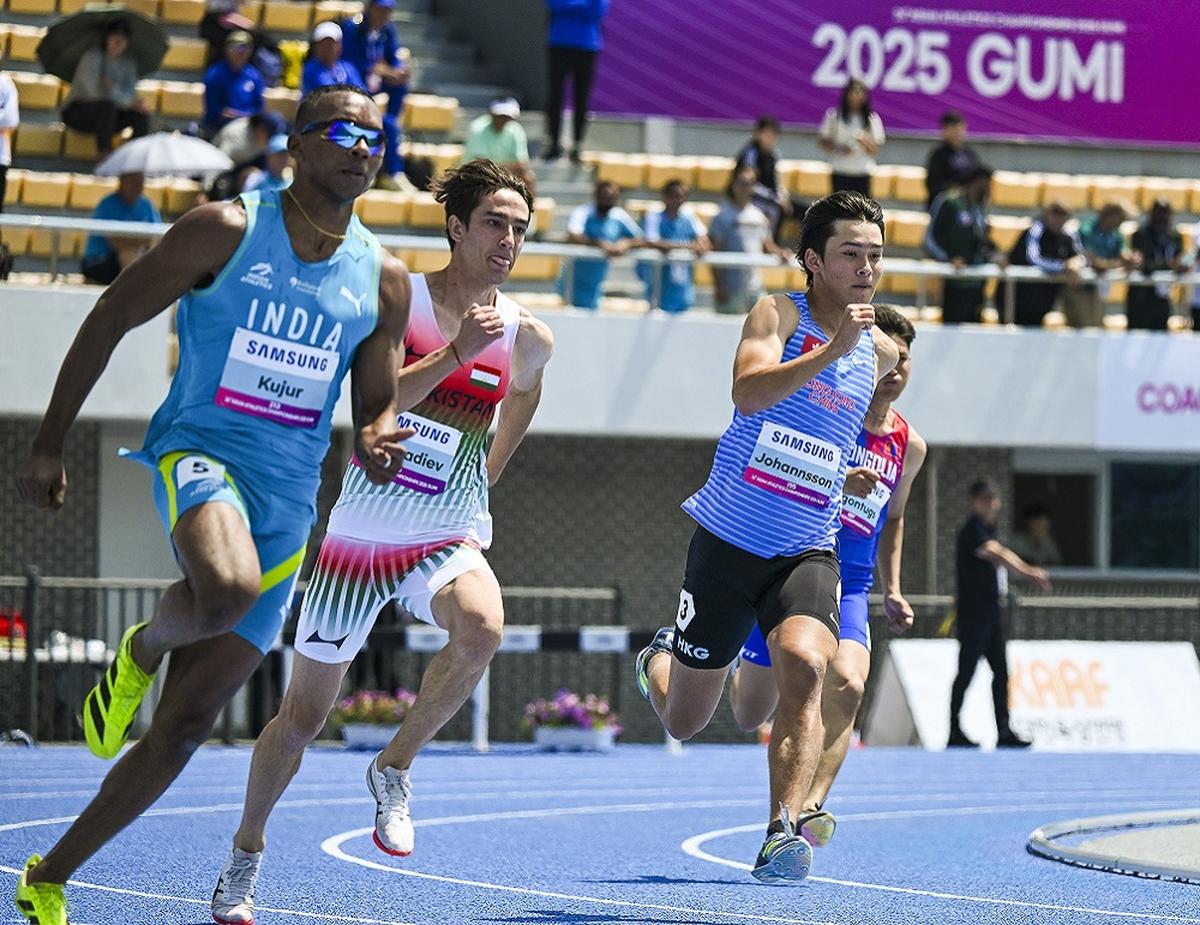
Animesh Kujur shattered his own national record by 0.18 seconds, clocking 20.32 to win bronze in the men’s 200m.
| Photo Credit:
Asian Athletics
Animesh Kujur shattered his own national record by 0.18 seconds, clocking 20.32 to win bronze in the men’s 200m.
| Photo Credit:
Asian Athletics
At least on paper, she shouldn’t have stood a chance. Having turned 18 just a few weeks ago, Pooja was the second youngest in the women’s high jump in Gumi. Five other competitors, including an Olympic finalist, had jumped higher than her in their careers.
Pooja, however, defied the odds, setting two personal bests — 1.86m and 1.89m — to stun a strong field. The result not only crowned her as the youngest Asian champion from India, but also opened the door to the World Championships in Japan later this year, where — as the continental titleholder — she holds a provisional qualification.
It remains to be seen whether the Athletics Federation of India (AFI) will submit her entry for the Worlds. Speaking to reporters after the tournament, AFI president Adille Sumariwalla didn’t announce any change to the federation’s policy of allowing only athletes who meet the World Championships’ automatic qualification standard to compete in Japan.
“We want some athletes to be preparing for the big competitions of next year like the Asian Games,” he said in response to a question from Sportstar.
At 1.97m, the qualification standard in the women’s high jump might prove a leap too far for Pooja. However, some athletes — if their performances at the Asian Championships are any indication — could well meet the World standards too.
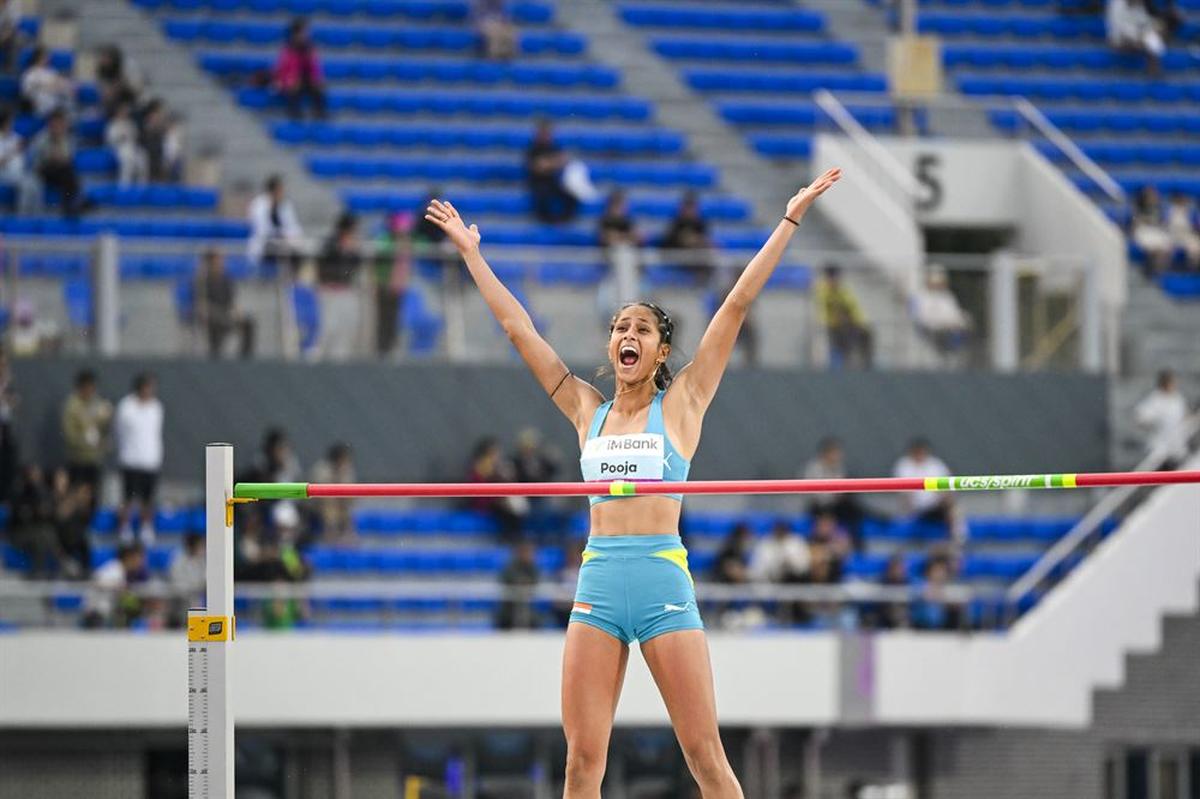
Eighteen-year-old Pooja became the youngest Asian champion from India in high jump, setting two personal bests along the way.
| Photo Credit:
Asian Athletics
Eighteen-year-old Pooja became the youngest Asian champion from India in high jump, setting two personal bests along the way.
| Photo Credit:
Asian Athletics
Parul Chaudhary won twin silvers in the women’s 5000m and 3000m steeplechase, but it was her national record in the latter (9:12.46) that will have followers of Indian athletics eager for more.
Although Parul had already qualified for the World Championships at the Doha Diamond League last month, her new time ranks her seventh fastest in the world this season.
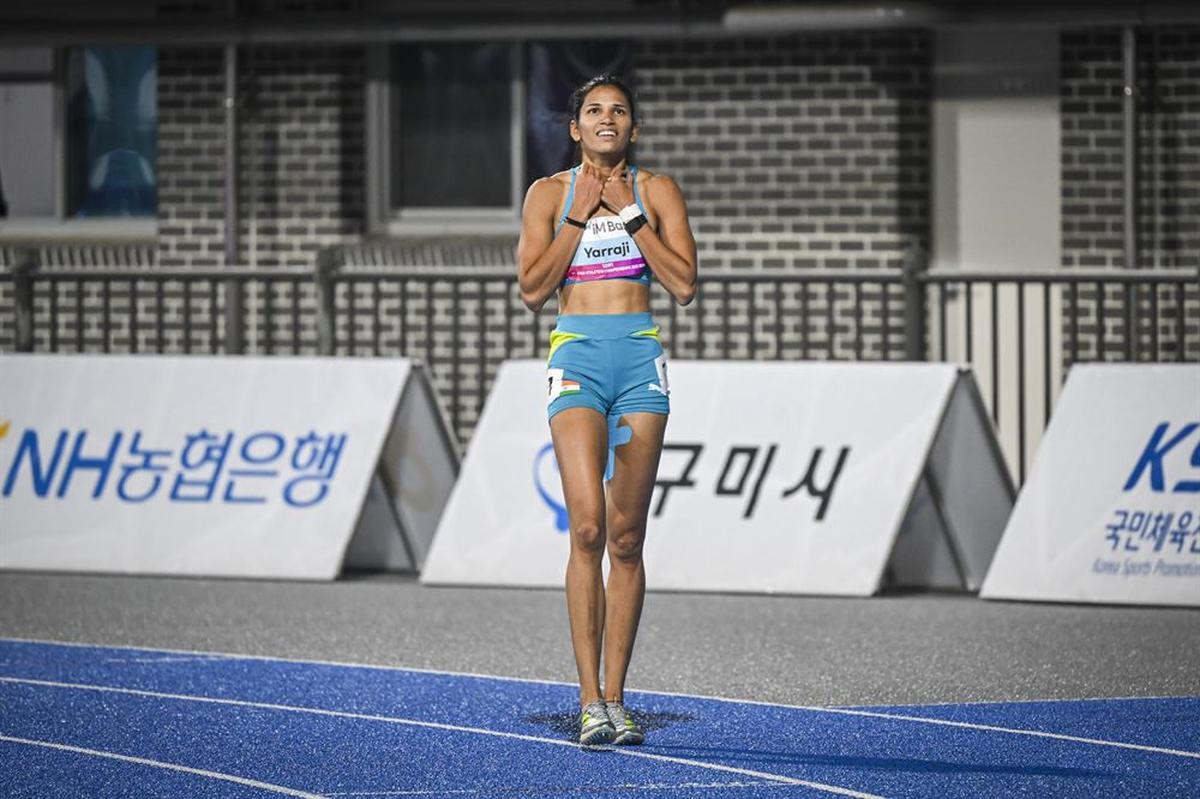
Jyothi Yarraji clocked her fastest time of the season — 12.96 — to clinch a second consecutive Asian gold.
| Photo Credit:
Asian Athletics
Jyothi Yarraji clocked her fastest time of the season — 12.96 — to clinch a second consecutive Asian gold.
| Photo Credit:
Asian Athletics
Jyothi Yarraji shrugged off a lengthy rain delay to win a second consecutive Asian gold in the women’s 100m hurdles with her fastest time (12.96) of the season. Given the conditions — and the fact that her preparation was hampered by a hamstring strain a few weeks earlier — Jyothi’s coaches believe she isn’t far off the World Championships standard of 12.73.
Distance runner Avinash Sable also fell short of the World qualification standard of 8:15.00 in the men’s 3000m steeplechase, but the time he managed (8:20.92) — as he cruised towards the finish line, even slowing down to acknowledge the applause on the final straight — suggests there’s more to come.
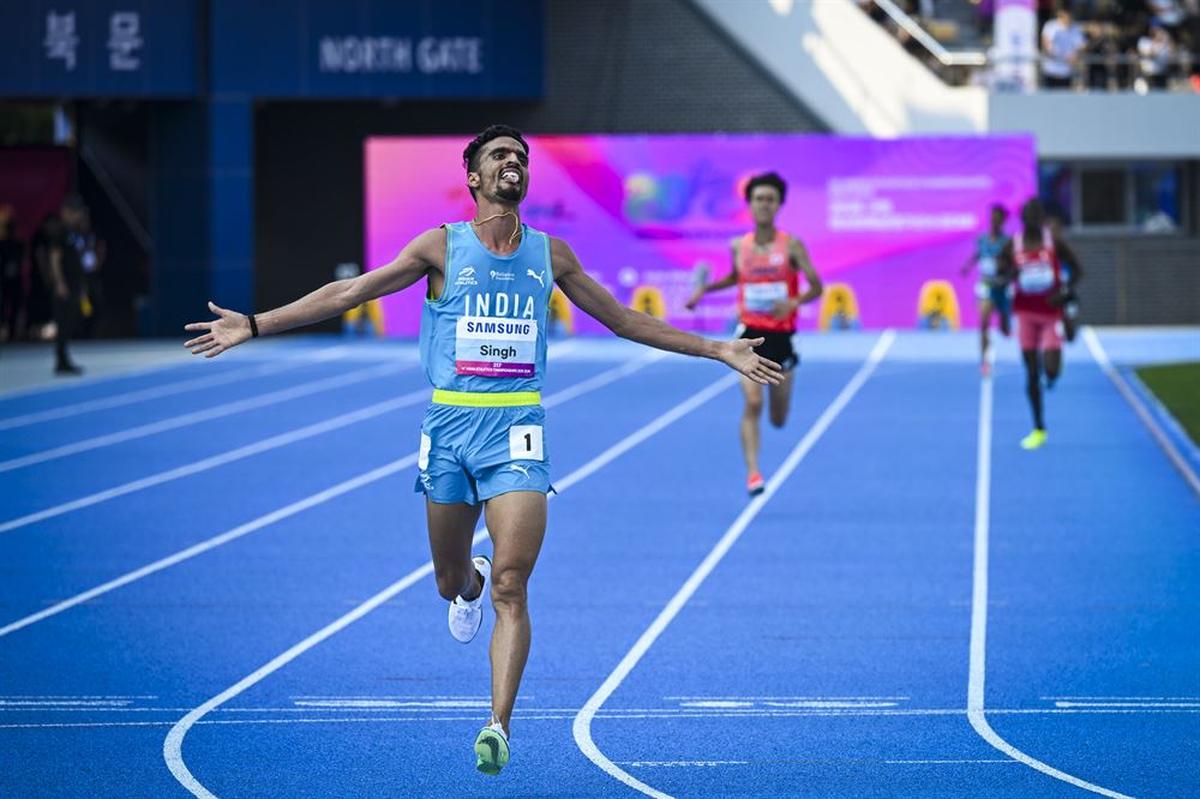
Gulveer Singh completed a golden double in the 5000m and 10,000m.
| Photo Credit:
Asian Athletics
Gulveer Singh completed a golden double in the 5000m and 10,000m.
| Photo Credit:
Asian Athletics
For Sable, it seemed the title of Asian champion mattered more than the time.
Gold medals were also won by the Indian teams in the women’s 4x400m relay and the 4x400m mixed relay — despite both falling short of national records.
Gulveer Singh, who completed a golden double in the 5000m and 10,000m, also fell short of his national records in both events, but made his priorities clear. “Timings are important, but it’s more important to win the gold medal,” says Gulveer.
Sachin might feel the same. While pleased to have come so close to Arshad in his international debut, he is already thinking about building on the performance.
“This was my first competition. I’ll get better next time,” he said.


